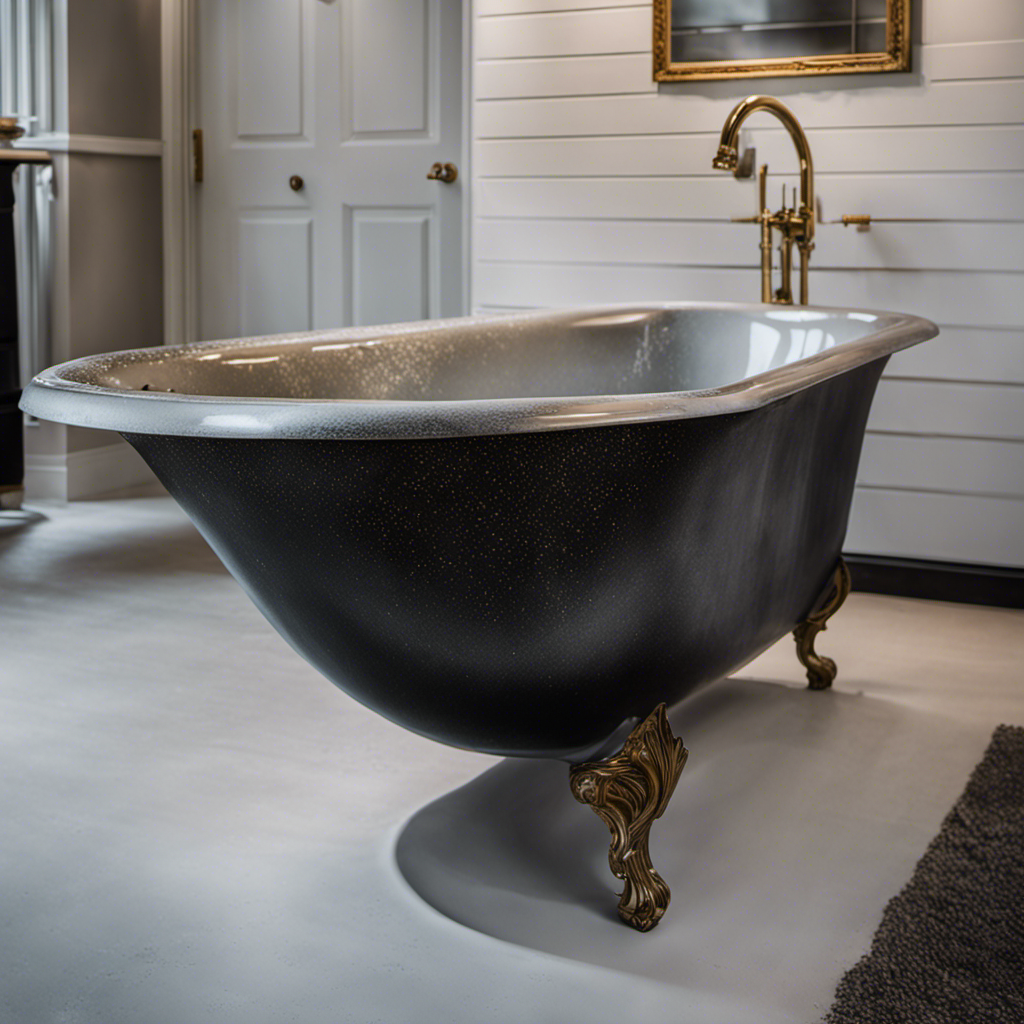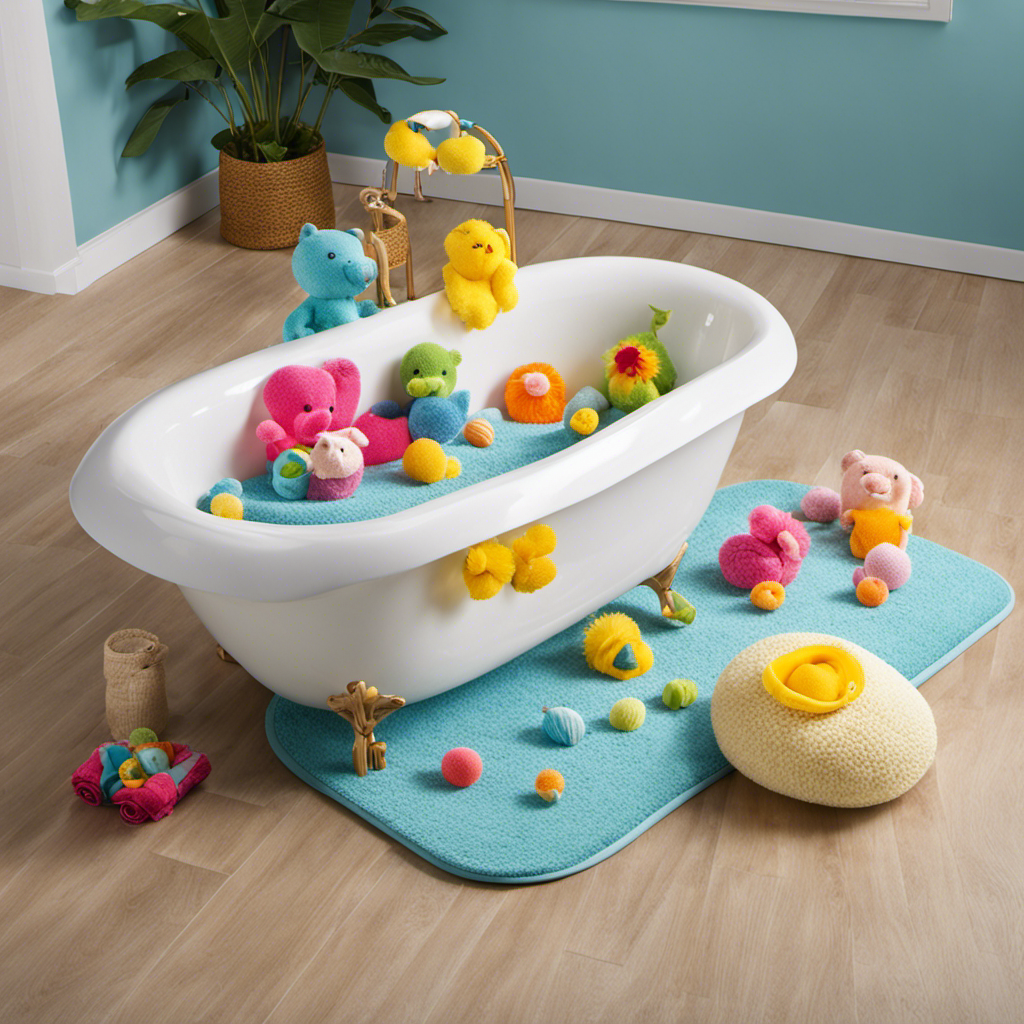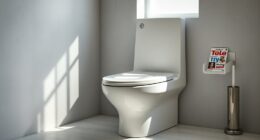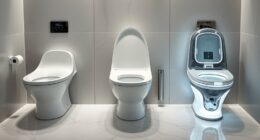So, you’re in the market for a new bathtub, huh? Well, before you dive in, let me give you the lowdown on how many gallons a standard bathtub can hold.
In this informative article, I’ll break down the average bathtub size, factors that affect bathtub capacity, and even provide tips for measuring bathtub volume.
Trust me, after reading this, you’ll be equipped with all the knowledge you need to make the right choice for your bathroom oasis.
Let’s get started!
Key Takeaways
- Standard bathtubs typically hold about 40 to 60 gallons of water.
- Bathtub dimensions vary, but most have a length of around 60 inches, a width of about 30 inches, and a height of approximately 14 to 20 inches.
- The capacity of a standard bathtub can range from 40 gallons to 80 gallons, with larger bathtubs having a higher water capacity.
- Factors such as the material and shape of the bathtub, as well as water usage preferences, can affect the number of gallons a bathtub can hold.
Average Bathtub Size
On average, a standard bathtub holds about 40 to 60 gallons of water.
When it comes to the dimensions of a bathtub, there is no standard size, as they can vary depending on the design and manufacturer. However, most bathtubs have a length of around 60 inches, a width of about 30 inches, and a height of approximately 14 to 20 inches.
These dimensions allow for a comfortable bathing experience while accommodating the average amount of water that a bathtub can hold.
As for bathtub materials, they can be made from various materials such as porcelain, fiberglass, acrylic, or cast iron. Each material has its own advantages and disadvantages in terms of durability, maintenance, and cost.
It is important to consider these factors when choosing a bathtub for your bathroom.
Determining Bathtub Capacity
To figure out the capacity of your average tub, you can use a simple method. First, you need to identify the material and shape of your bathtub. Different materials and shapes can affect the amount of water the tub can hold. For example, a fiberglass tub may have a different capacity compared to a cast iron tub. Similarly, the shape of the tub, whether it’s rectangular, oval, or corner-shaped, can also impact its capacity. To give you a better understanding, here is a table showcasing the average capacity range for different materials and shapes:
| Bathtub Material | Bathtub Shape | Average Capacity (in gallons) |
|---|---|---|
| Fiberglass | Rectangular | 40-60 |
| Cast Iron | Oval | 50-70 |
| Acrylic | Corner | 60-80 |
| Porcelain | Round | 70-90 |
Understanding the materials and shapes of bathtubs is crucial in determining their capacity. However, there are other factors that can also affect the number of gallons a bathtub can hold.
Factors Affecting Bathtub Gallons
Understanding the materials and shapes of bathtubs is crucial in determining their capacity. There are also other factors that can impact how much water they can contain.
In addition to bathtub size variations, the material of the bathtub itself plays a significant role in determining its capacity. Different materials have different densities, which can affect how much water the bathtub can hold. For example, a bathtub made of acrylic may have a higher capacity than one made of cast iron, as acrylic is lighter and can be molded into larger shapes.
Furthermore, the shape of the bathtub, such as its depth and width, can also impact its capacity. A deeper and wider bathtub will generally have a larger capacity compared to a shallower and narrower one.
Therefore, when considering the capacity of a bathtub, it is important to take into account not only its size variations but also the material it is made of.
Standard Bathtub Gallon Range
When it comes to the average gallon capacity of a standard bathtub, there are several key factors to consider. These factors directly affect the overall capacity of the bathtub and can determine how much water it can hold.
However, if you find that your current bathtub does not meet your needs in terms of capacity, there are options available for upgrading to a bathtub with more capacity.
Average Gallon Capacity
The average bathtub holds around 50-60 gallons of water. This capacity can vary depending on the size and design of the bathtub.
When considering the capacity of a bathtub, it is important to take into account the materials used in its construction. Different materials, such as acrylic, fiberglass, or cast iron, can affect the weight and volume of water that a bathtub can hold.
Additionally, water conservation techniques can also impact the amount of water a bathtub can hold. For example, some bathtubs may have built-in features, such as water-saving faucets or adjustable water levels, which can help reduce water usage.
Considering these factors is crucial to ensure that you choose a bathtub that meets your specific needs and preferences.
Moving forward, let’s explore the various factors that can affect the capacity of a bathtub.
Factors Affecting Capacity
To determine the capacity of a bathtub, you should consider factors such as its size, design, and material.
The size of the bathtub directly affects its capacity, with larger tubs generally holding more water.
The design of the bathtub, including its shape and depth, can also impact its capacity.
Additionally, the material from which the bathtub is made plays a role in determining its capacity. Different bathtub materials have varying thickness and density, which affect the amount of water they can hold. For example, acrylic bathtubs tend to be lighter and have a higher water capacity compared to cast iron bathtubs.
Another important factor to consider is water displacement, which occurs when you enter the bathtub. This reduces the overall capacity.
Taking these factors into account will help you determine the capacity of your bathtub accurately.
Now, let’s explore how you can upgrade your bathtub for more capacity.
Upgrading for More Capacity
If you want to increase your bathtub’s capacity, you can consider upgrading to a larger size or choosing a deeper design. Expanding your bathtub dimensions is a great way to maximize water capacity and enhance your bathing experience.
Here are some options to consider:
- Larger Size: Opt for a bathtub with more length, width, and depth to increase the overall water capacity.
- Deeper Design: Look for bathtubs with a deep soaking feature, allowing you to fill the tub with more water without overflowing.
- Customization: Consider customizing your bathtub to fit your specific needs, such as adding extra width or depth.
- Hydrotherapy Options: Explore bathtubs with hydrotherapy features, such as whirlpool jets or air bubbles, which can increase water capacity and provide a more relaxing experience.
Tips for Measuring Bathtub Volume
Start by filling up your bathtub with water until it reaches the desired level.
To measure the volume accurately, there are alternative methods you can use.
One method is to use a large container with known volume and carefully pour the water from the bathtub into it, keeping track of the number of times you fill it.
Another method is to use a measuring tape to measure the length, width, and depth of the bathtub, and then calculate the volume using a mathematical formula.
Whichever method you choose, it is important to ensure precision in your measurements to obtain accurate results.
Comparing Different Bathtub Models
When comparing different bathtub models, it’s essential to consider factors like size, material, and features.
The material of a bathtub plays a significant role in its durability and overall aesthetic appeal. Some common bathtub materials include acrylic, fiberglass, cast iron, and porcelain-enameled steel. Each material has its own advantages and disadvantages, so it’s important to research and compare them before making a decision.
Additionally, the features of a bathtub can greatly enhance your bathing experience. Features to consider include built-in jets for a spa-like experience, a hand shower for added convenience, or even a built-in heater for maintaining water temperature.
Conclusion
In conclusion, determining the capacity of a standard bathtub involves considering various factors such as dimensions, shape, and depth.
On average, a standard bathtub holds around 40 to 60 gallons of water. However, it is important to remember that the actual volume may vary based on the specific bathtub model and any additional features it may have.
To accurately measure the bathtub volume, one can use simple mathematical calculations and precise measuring tools.
So whether you prefer a relaxing soak or a quick shower, knowing the gallons your bathtub can hold will ensure an enjoyable bathing experience.










